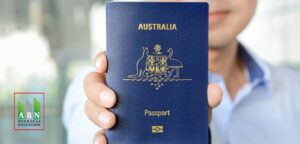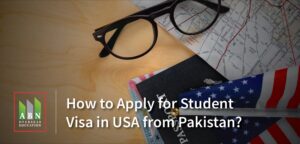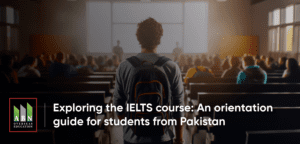1. Investigate and Select Your Course and Institution
- Examine the many programs and establishments in Australia.
- Make sure the course you select satisfies visa requirements and is registered with the Australian Government.
- Consider elements like course content, reputation, and location.
2. Submit an admission request
- Apply online via the application portal of the chosen school and course.
- Send in all necessary paperwork, including recommendation letters, academic records, and – results of English language tests (such as the IELTS and PTE).
- Wait for a word of acceptance.
3. Recognize the Need for a Genuine Temporary Entrant (GTE)
- The GTE requirement determines if you plan to remain temporarily in Australia to pursue your studies.
- It could be necessary for you to submit a declaration outlining your plan to study in Australia and then go back home once your studies are over.
4. Obtain the Certificate of Enrolment (COE)
- Your school will give you a Confirmation of Enrolment (COE) for your course if approved.
- To apply for a visa, you must have the COE.
5. Compile the necessary records
- Gather the required paperwork, such as a current passport.
- Verification of Registration (CoE).
- Evidence of the ability to pay for living expenses, tuition, and return travel.
- Proof of language proficiency in the English language.
- The policy of Overseas Student Health Coverage (OSHC).
- Whatever further paperwork the Australian Department of Home Affairs requests.
6. Establish a MyImmiAccount
- Create an ImmiAccount by going to the Department of Home Affairs website of the Australian Government.
- You will submit your visa application and oversee the visa application process here.
7. Fill out the application.
- Using your ImmiAccount, complete the online student visa application form (subclass 500).
- When necessary, upload scanned copies of your documents.
- Pay the application fee for a visa, which varies depending on your situation.
8. Health Check and Biometrics
- You could be required to submit to a health examination and furnish biometrics (fingerprints and photos), depending on your situation.
9. Hold Off on Processing
- Check your ImmiAccount for updates on the status of your visa application after submitting your application.
- For up-to-date estimates, visit the Department of Home Affairs website, as processing times may differ.
10. Get the Visa Decision
- You will be notified when your visa is authorized.
- Scrutinize the visa issuance letter and familiarize yourself with the terms of the visa.
11. Journey to Australia
- After your visa is approved, make travel arrangements to Australia.
- Make sure you follow any travel or quarantine restrictions imposed by the COVID-19 pandemic.
Types of Australian Visas:
1. Student Visa (Subclass 500):
For international students enrolled in a full-time course in Australia.
2. Visitor Visa (Subclass 600):
For visiting Australia for tourism, family visits, or business purposes.
3. Skilled Visas (e.g., Subclass 189, 190, 491):
For skilled Labor or workers who want to live and work in Australia.
Student Visa Conditions and Work Rights:
- Work Limitations:
- Student visa holders can work up to 40 hours per fortnight (two weeks) during the academic session and unlimited hours during scheduled course breaks.
- Working beyond these limits without permission is a breach of visa conditions.
- Pay Rate:
- Ensure that you are paid at least the minimum wage, according to Australian law, for any work you undertake. Which begins at AUD 21.38
- If you believe you are being paid below the minimum wage or are experiencing other issues with your pay, you should report this to the Fair Work Ombudsman for assistance in resolving the matter.
- Student Visa Law:
- Student visa holders are required to comply with Australian laws and regulations.
- Violations of visa conditions or Australian laws can lead to visa cancellation and deportation.
It’s crucial to consult the official Australian Government resources and seek advice from qualified immigration professionals for accurate and up-to-date information on visa requirements and application procedures.
Pakistani students who satisfy the requirements can apply for an Australian student visa. The following are the prerequisites in general:
Entrance into a Full-Time Course: To be qualified for a full-time course listed on the Commonwealth Register of Institutions and Courses for Overseas Students (CRICOS), candidates must have got an offer of admission and a Confirmation of Enrolment (COE) from an Australian educational institution.
Genuine Temporary Entrant (GTE) Requirement: Applicants must show that they sincerely desire to study briefly in Australia and, upon completion of their studies, to return home.
Financial Capacity: Candidates must show they can pay for their education, living expenses, and any additional family members’ return airfares to Pakistan.
English Language Competency: Candidates may be required to submit their scores from an authorized English language exam, such as the PTE Academic, TOEFL, or IELTS, to verify their language competency.
Applicants must acquire Overseas Student Health Coverage (OSHC) to cover medical costs during their stay in Australia.
Fulfil Genuine Temporary Entrant (GTE) Requirements: Applicants must show that they want to enter Australia temporarily for educational purposes exclusively and be able to pay for living and studying expenses while there.
Compliance with Visa Requirements: Students must adhere to all visa requirements, which include continuing to enrol in a registered course, keeping up acceptable attendance and academic progress, and respecting employment limits.





















